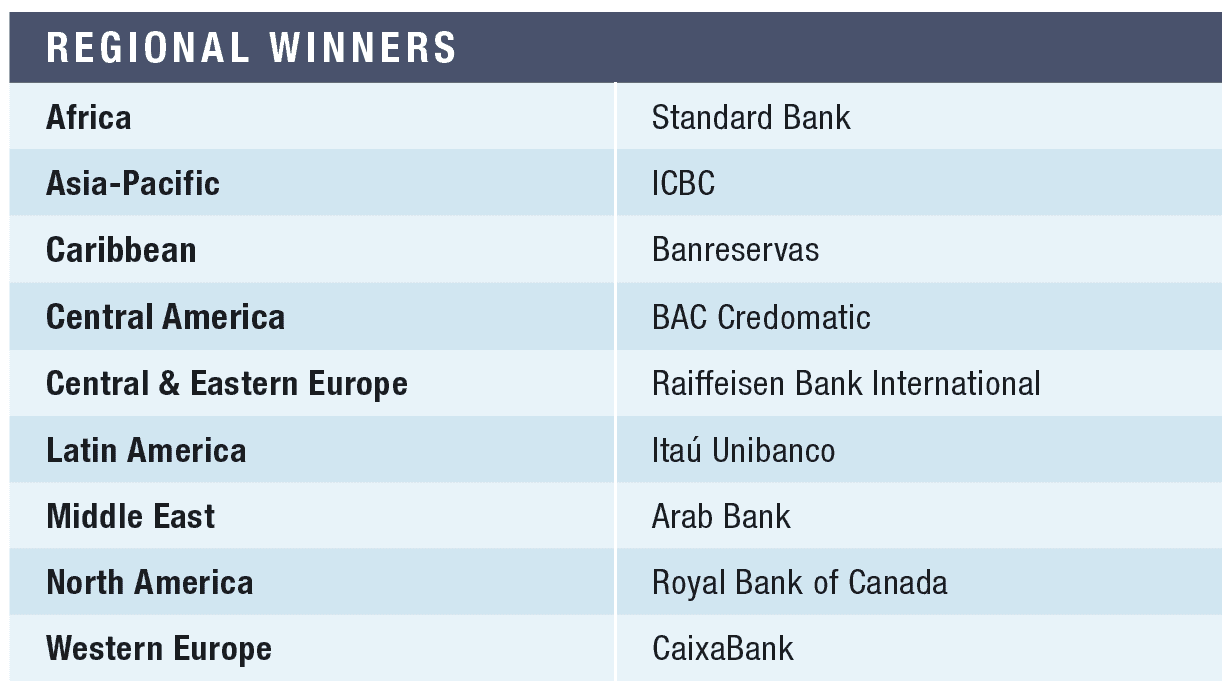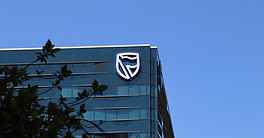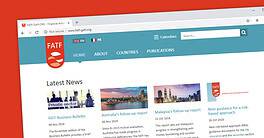The year’s best banks pivoted to adapt to Covid-19—and set the stage for economic recovery.

The outbreak of the worst pandemic in more than a hundred years created enormous challenges for governments, businesses and citizens. In 2020, Covid-19 triggered lockdowns that clobbered economies, disrupted supply chains, and engendered uncertainty and volatility in financial markets.
On the whole, the world’s banks responded to these challenges remarkably well. They adapted speedily to requirements for social distancing, harnessing digital capabilities to the new challenges of safely maintaining direct contact with their customers while continuing to channel payments and provide their range of products and services almost entirely through remote channels.
The move towards digitalization certainly preceded the pandemic, but in 2020 bank customers shifted to online and mobile banking in record numbers—even in regions, such as the Middle East, where previously cash had been king. This is likely to be a permanent shift, and over the long term opens up to all banks the potential of further cost savings.
This accelerated migration tended to favor banks that had already invested heavily in technology and were thereby able to offer customers a broader range of products and services through more user-friendly apps. It is no coincidence that many of this year’s Global Finance Best Banks are leaders in technology within their own country or region.
The shocks triggered by the pandemic, with entire business sectors having to close down and soaring job insecurity, called for a rapid response. Again, most lenders weighed in with a range of assistance programs, from loan repayment deferrals and participating in government-led furlough schemes to extending credit to those businesses—and especially SMEs—that stood most in need.
Many of our winning banks also contributed directly to social and healthcare initiatives to alleviate Covid-related difficulties, while others temporarily suspended payment of dividends in order to strengthen their financial base. For banks to continue their key functions of money transmission and the providing of credit, such reinforcement of capital buffers was both timely and essential.
Similarly, the combination of volatile financial markets and the likelihood of higher loan impairments encouraged most banks to sharply increase their provisioning during the first half of the year. In most cases, this severely impacted on their profitability even when they turned in a strong operating performance and gained market share. Across Africa last year, for instance, lenders’ average return equity was only 50% of what they achieved in 2019. Those banks with strong franchises in areas not dependent on lending, such as insurance, investment banking and wealth management, have generally outperformed.
And while some of the headwinds faced by banks predated the pandemic—notably a prolonged low-interest-rate environment and squeezed margins on lending—the expectation of a sharp global downturn placed further strains on their balance sheets. Those concerns may have been overdone, and the financial markets now indicate that most regions will experience a strong economic recovery during the current year. Yet the gradual withdrawal of furlough schemes and other state-backed assistance to businesses does mean that further along the line there will a surge in non-performing loans, and those banks that have provisioned prudently against such outcomes will emerge all the stronger.
Methodology
Global Finance editors, with input from industry analysts, corporate executives and technology experts, select the winners for the Best Bank Awards using information provided in entries and independent research based on a set of both objective and subjective factors. It is not necessary to enter in order to win, but materials supplied in an entry can increase the chance of success. Entrants are able to provide details that may not be publicly available.
Judgements are based on performance from January 1 to December 31, 2020. We apply an algorithm to shorten the list of contenders and arrive at a numerical score, with 100 equivalent to perfection. The algorithm incorporates criteria—including knowledge of local conditions and customers, financial strength and safety, strategic relationships, capital investment and innovation in products and services—weighted for relative importance.
Once we have narrowed the field, our final criteria include scope of global coverage, size of staff, customer service, risk management, range of products and services, execution skills and smart use of technology. In the case of a tie, our bias leans toward a local provider rather than a global institution. We also tend to favor privately owned banks over government-owned institutions. The winners are those banks that best serve the specialized needs of corporations as they engage in global business. The winners are not always the biggest, but rather the best: those with qualities that companies should look for when choosing a provider.




